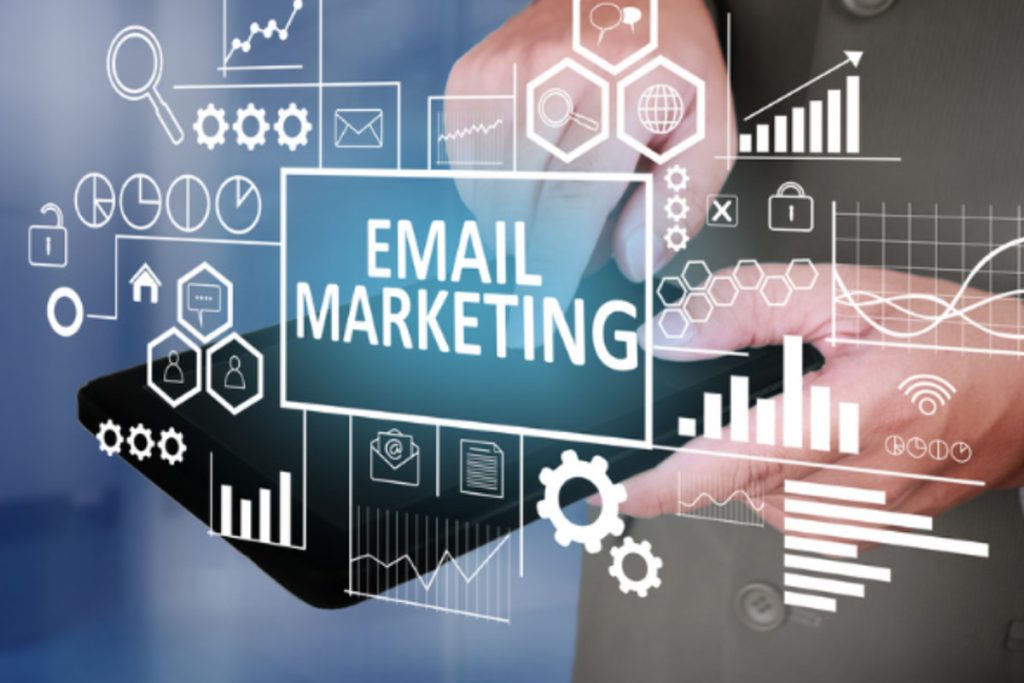The Importance of Email Lists for Businesses

Updated 4/7/25
Mailing lists may seem “old-school” to many business owners, but email marketing has continually evolved to remain one of the most effective digital marketing strategies. Far from being outdated, today’s email campaigns leverage AI-driven personalization, automation, and data analytics to deliver highly targeted, engaging content to subscribers.
Over the years, email marketing has shifted from mass outreach to smart, predictive engagement, adapting to changes in consumer behavior and technology. Let’s take a look at its evolution and how it continues to shape the future of digital marketing.
2000sPersonalization & Segmentation
Marketers moved beyond mass emails, segmenting lists based on demographics, behavior, and interests to improve engagement.
2010s Automation & Triggered Campaigns
The introduction of automated workflows enabled brands to send targeted messages based on user actions, such as abandoned carts or sign-ups.
2010sData-Driven Email Optimization
The integration of email with analytics platforms allowed businesses to track performance metrics and refine their strategies for better results.
Present and BeyondAI-Powered Personalization & Predictive Analytics
Email marketing is transforming with the latest advancements in artificial intelligence, machine learning, and automation. These technologies are reshaping how brands connect with their audiences, making campaigns smarter, more predictive, and deeply personalized at scale.
Modern AI-driven platforms analyze real-time customer interactions, predict future behavior, and adjust messaging accordingly. Marketers can now deliver hyper-targeted content based on past engagement, browsing history, and even sentiment analysis.
With its adaptability and resilience, it is no surprise that email marketing remains one of the most effective digital strategies, consistently delivering a high return on investment. According to recent industry studies, businesses are experiencing an average ROI of 4200%, making it one of the most cost-effective marketing channels available today.
Achieving this level of success, however, depends on having a strong, well-maintained mailing list. Building and maintaining a high-quality, engaged list should remain a top priority for any business looking to maximize its email marketing efforts.
How Do Mailing Lists Work? What Are They?
Put simply, a mailing list is a list of email contacts that are used for communications, information sharing, and marketing outreach.
Mailing lists allow businesses to connect with and engage leads, prospects, and existing and past customers. You can send email messages to subscribers of your mailing list about relevant content, news, events, products, and services.
Depending on your organizational goals, processes, and email platform, you can use your mailing lists to send one-off emails, sales emails, and triggered emails based on engagements.
Or you can send a series of automated email campaigns customized for each recipient or segment of your mailing list based on their marketing persona.
Automated email campaigns are also called drip campaigns, lifecycle emails, and marketing automation.
Today, there are even AI-driven auto-personalization email platforms that automatically send tailored content based on each subscriber’s previous email interactions to maximize engagement and value.
Want to ensure your email automation strategy avoids common pitfalls? Check out our guide on Marketing Automation Mistakes and How to Avoid Them.
List Building
You can build up a strong mailing list organically by creating email-protected lead magnets on your site that are full of useful and engaging content and unique value propositions. You should also strategically place relevant sign-up forms on your website with strong calls-to-action.
Then, continuously segment your mailing list into groups. Email segmentation allows you to send tailored content based on the recipient’s unique marketing persona to increase email engagement and conversions.
For even greater efficiency, AI-driven personalization tools can automate segmentation and dynamically adjust email content based on real-time user engagement. Keeping segmentation up to date ensures that marketing efforts remain relevant and effective.
List Management
Your mailing lists should be made up of people who physically subscribe to your email list. If they ever unsubscribe, their email address should be removed immediately.
Laws such as CAN-SPAM Act prohibits unsolicited bulk email. The standard for email permission today is called double opt-in (aka confirmed opt-in). This is when a user signs up or subscribes to your mailing list, and then you send them an automated email with a confirmation link.
It’s also important to keep your mailing lists clean and free from users who have unsubscribed, fake email addresses, unresponsive contacts, as well as soft and hard bounces. If not, you could end up on an email blacklist, which identifies your email domain and/or IP address as spam.
How Effective are Mailing Lists?
Mailing lists are highly effective if they are authentic, relevant, and large in quantity. Email lists consisting of active email addresses and real contact information for a high volume of people within your target audience base deliver a 4400% ROI.
To yield the lucrative rewards that mailing lists can generate for your business, you need reliable email addresses from active email users who are genuinely interested in your brand and offerings.
If you don’t have quality and relevant email contacts, then the volume of your mailing list won’t make a huge difference. So, ensure quality and relevancy are in place first before you switch your focus to the quantity of your list.
Why are Mailing Lists Important for Businesses?
Building, segmenting, and keeping your mailing list clean should be high on your list of organizational priorities for the foreseeable future.
Here’s why:
- Direct Access to Your Audience – Unlike social media platforms, where algorithm changes can limit visibility, email marketing ensures that messages land directly in subscribers’ inboxes, giving businesses unfiltered access to their audience.
- Advanced Segmentation and AI-powered personalization – Email lists allow businesses to implement highly targeted campaigns based on user behavior, purchase history, and engagement levels. With AI-powered platforms, businesses can now dynamically personalize content at scale, leading to better engagement.
- Higher Reach and Engagement Rates – Over 4.5 billion people actively use email, making it one of the most reliable communication channels. Businesses leveraging mailing lists can expect consistently higher engagement and open rates compared to other digital marketing strategies.
- Trust and Brand Authority – Email marketing fosters trust by allowing businesses to communicate directly with customers in a permission-based environment. A well-managed email list helps establish credibility and keeps subscribers engaged over the long term.
The Impact of Email Privacy Updates on Marketing
Recent email privacy changes continue to reshape how businesses track email engagement. Apple Mail Privacy Protection (MPP), Google’s evolving spam filters, and GDPR/CCPA compliance updates have limited the ability to track email open rates and pixel-based engagement.
However, businesses can still gather meaningful insights by focusing on:
- Click-through rates and engagement tracking – Since open rates are no longer reliable, marketers are shifting their focus to tracking clicks, conversions, and user interactions within emails.
- Preference-based marketing – Instead of relying on third-party data, businesses are encouraging subscribers to self-select preferences for content, creating more relevant campaigns.
- First-party and zero-party data collection – With the decline of third-party cookies, businesses are investing in interactive content, surveys, and gated resources to collect first-hand data directly from subscribers.
Should I Buy A Mailing List?
Many business leaders today are still tempted to purchase email lists as a shortcut to growing their audience. However, in 2024, buying email lists became more ineffective—and riskier—than ever due to advanced email filtering algorithms and evolving privacy regulations.
Here’s why purchased lists perform worse than ever:
- Stronger Email Spam Filters: Gmail, Outlook, and Yahoo have enhanced AI-driven spam detection that flags bulk-purchased email lists. Even legitimate marketing emails sent to unverified lists are more likely to end up in the spam folder—or get blocked entirely.
- Decreased Deliverability & Reputation Risks: Sending emails to a low-quality or purchased list can result in higher bounce rates, more spam complaints, and blacklisted sender domains. Once your domain is flagged, all future email campaigns—even to real subscribers—could be affected.
- Lower Engagement & ROI: Even if a purchased list contains real email addresses, those recipients never opted in to hear from your business. This leads to lower open rates, higher unsubscribe rates, and wasted marketing budget.
Better Alternatives to Buying Email Lists
Instead of risking their reputation on a purchased list, businesses should focus on organic, high-quality lead generation strategies, including:
- LinkedIn Lead Generation: Use LinkedIn’s Sales Navigator & Lead Gen Forms to connect with B2B decision-makers and collect verified contact information. Unlike purchased lists, these are real prospects who have shown interest in your services.
- Zero-Party Data Collection: Encourage visitors to willingly share their email through interactive content like quizzes, surveys, gated resources, and exclusive offers. Zero-party data ensures high-quality, permission-based leads.
- SEO & Content-Driven List Building: High-value blog posts, industry reports, and free tools can drive organic email sign-ups from engaged prospects rather than random cold leads.
- AI-Driven Email Segmentation & Personalization: Instead of casting a wide net with purchased lists, use AI-powered email marketing platforms to personalize outreach and nurture high-intent leads.
The Future Of Email Marketing For Businesses
This new era of email marketing is about AI-powered engagement, predictive analytics, and hyper-personalized messaging to boost click-through rates and brand loyalty.
A powerful way to accomplish this is through personalization.
Personalized emails deliver six times higher transaction rates than one-size-fits-all email messages. In fact, personalization is the most effective email tactic today.
The future of email marketing is all about sending personalized, targeted, and automated emails that deliver valuable and relevant content.
Getting a plan in place today and building your mailing list will allow you to take advantage of the dramatic returns of organic list building and email outreach.
Why You Need To Build A Mailing List Right Now
Email is a goldmine for businesses, if you use list-building best practices. The effectiveness and ROI of list building depend on the authenticity and relevance of your lists, first and foremost, and, secondly, the length of your list.
Beyond organic list-building practices, the quality and level of personalization of your campaigns is essential for your email marketing efforts to work going forward.
If you’re not already doing so, now is the time to build up your mailing list and promote trust and value in your brand with engaging and targeted email communications.
Ready to get started? Check out our Strategic Approach to Email Automation for Growing Businesses and contact us today to learn how to take your email marketing to the next level! 🚀
About the Author

Kevin Bossons
Senior Digital Strategist
With over 15 years of experience in digital marketing and search engine optimization, Kevin has grown from an SEO contractor to Senior Digital Strategist at WT Digital Agency.